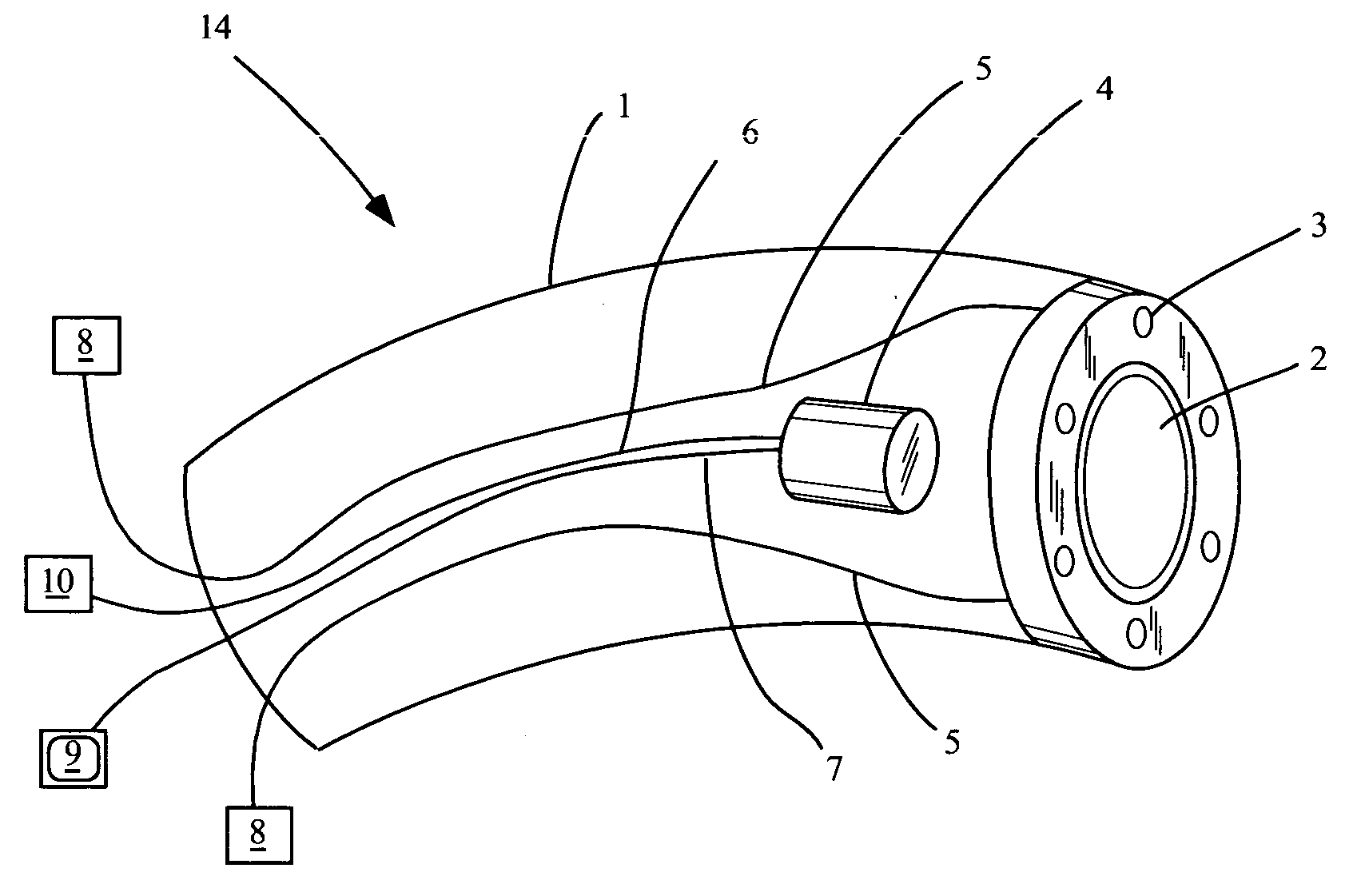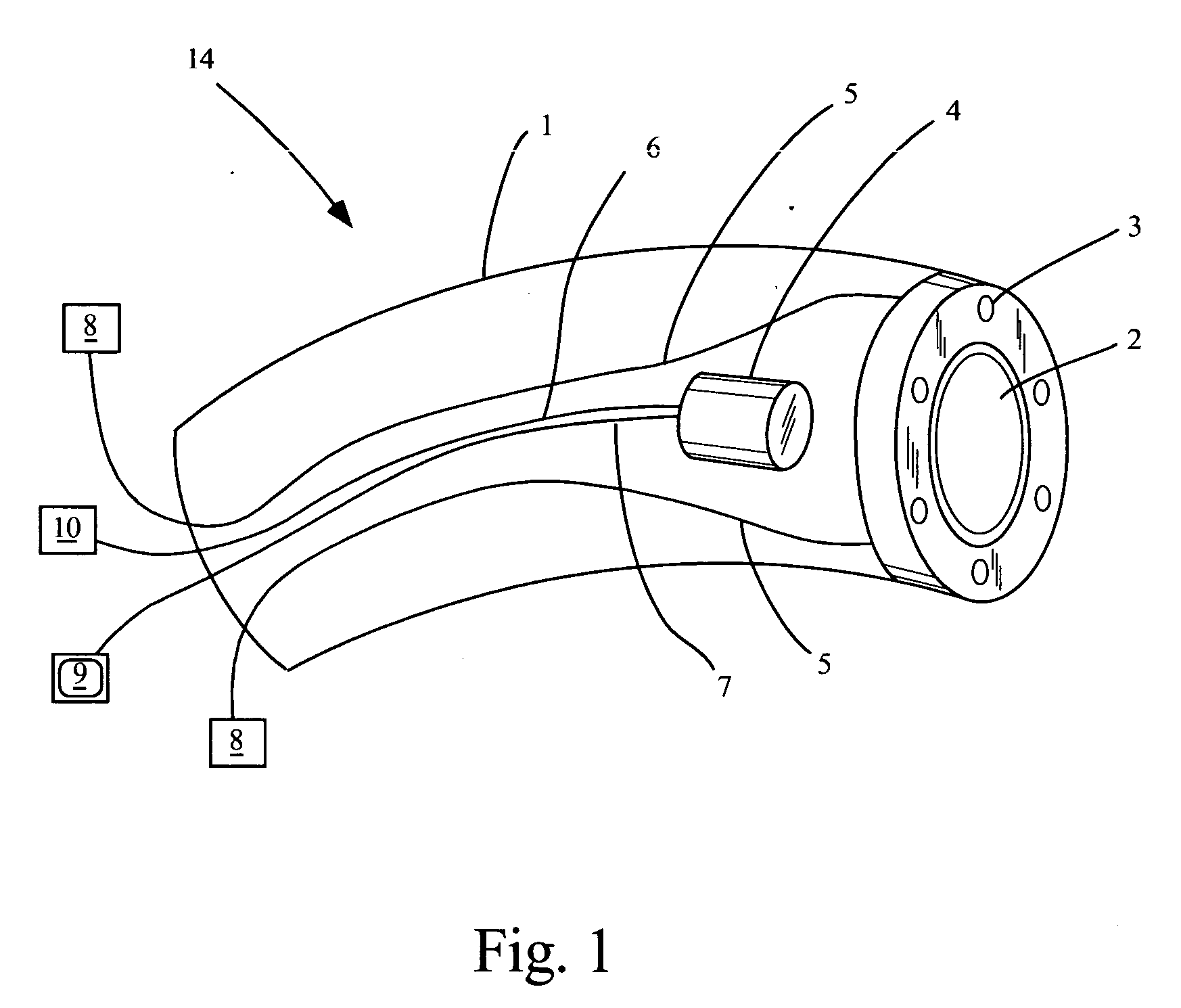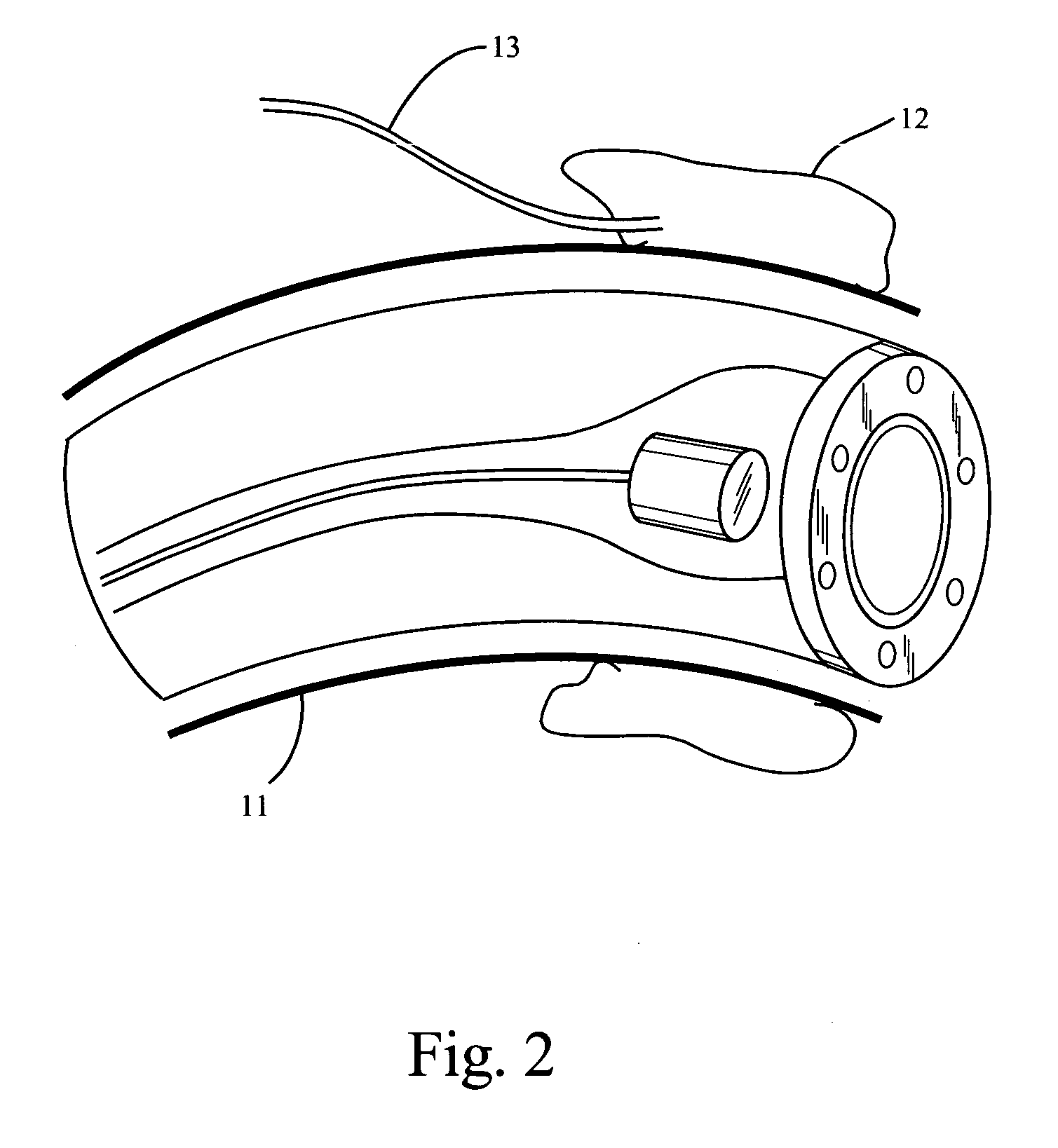Visualization stylet for endotracheal intubation
- Summary
- Abstract
- Description
- Claims
- Application Information
AI Technical Summary
Benefits of technology
Problems solved by technology
Method used
Image
Examples
Embodiment Construction
[0062] A specific embodiment of the invention is shown in FIGS. 1 and 2. FIG. 1 shows a schematic representation of the visualization stylet (14). All the elements of the stylet are contained within the lumen of the stylet the (1). The stylet in this particular embodiment has a plurality of white LED lights (3) disposed in a circular pattern at the outside circumference of the distal tip of the stylet, surrounding a central lens (2). The lens focuses light from an image onto the CCD camera (4). The LED lights receive power from one or more power conduits (5) which are electrically connected to a power supply (8). The power supply may be one or more dry cell batteries contained within the body of the stylet, or may be external. The camera, which may be a CCD camera, is centered within the axis of the lumen and slightly behind the distal tip of the stylet tube (1), shielded from the lights (3). The camera receives electrical power from a power supply (10) via a power supply conduit (6...
PUM
 Login to View More
Login to View More Abstract
Description
Claims
Application Information
 Login to View More
Login to View More - R&D
- Intellectual Property
- Life Sciences
- Materials
- Tech Scout
- Unparalleled Data Quality
- Higher Quality Content
- 60% Fewer Hallucinations
Browse by: Latest US Patents, China's latest patents, Technical Efficacy Thesaurus, Application Domain, Technology Topic, Popular Technical Reports.
© 2025 PatSnap. All rights reserved.Legal|Privacy policy|Modern Slavery Act Transparency Statement|Sitemap|About US| Contact US: help@patsnap.com



